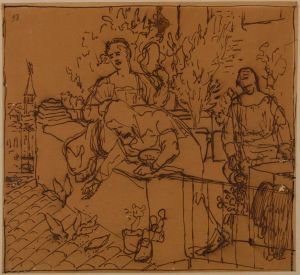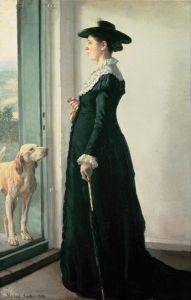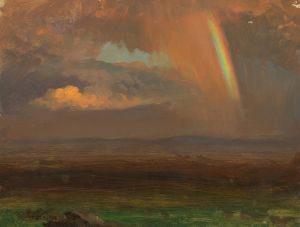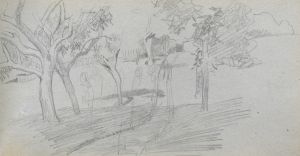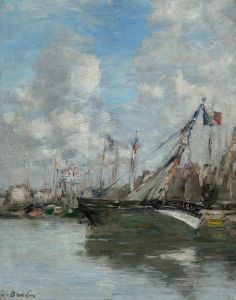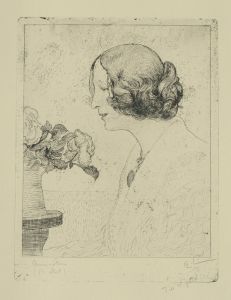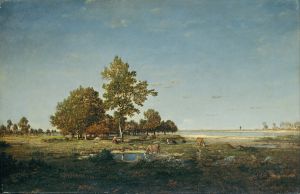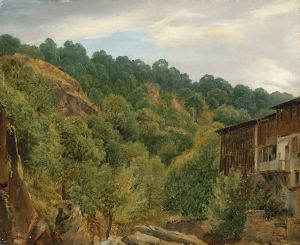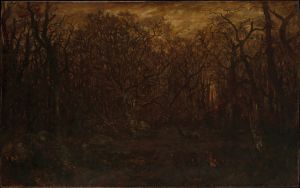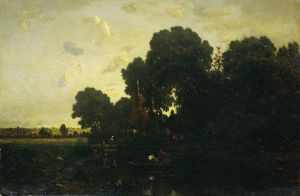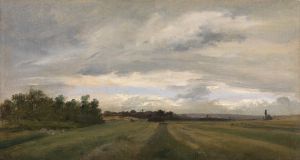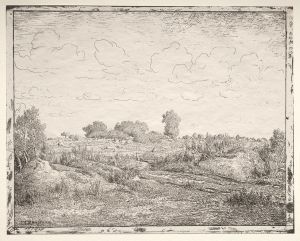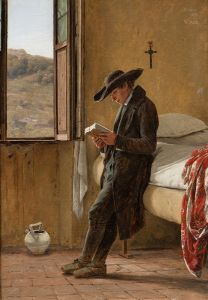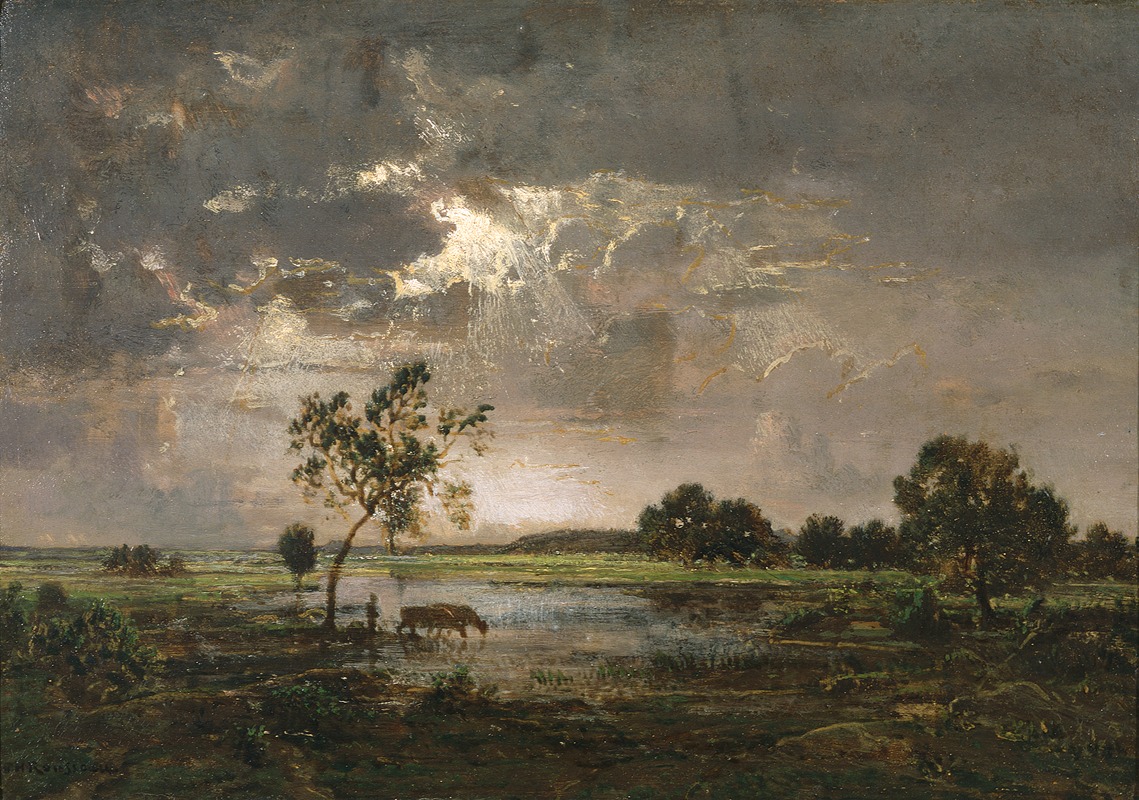
Landscape
A hand-painted replica of Théodore Rousseau’s masterpiece Landscape, meticulously crafted by professional artists to capture the true essence of the original. Each piece is created with museum-quality canvas and rare mineral pigments, carefully painted by experienced artists with delicate brushstrokes and rich, layered colors to perfectly recreate the texture of the original artwork. Unlike machine-printed reproductions, this hand-painted version brings the painting to life, infused with the artist’s emotions and skill in every stroke. Whether for personal collection or home decoration, it instantly elevates the artistic atmosphere of any space.
Théodore Rousseau was a prominent French painter associated with the Barbizon School, a movement that emerged in the mid-19th century. This group of artists was known for their realistic and naturalistic depictions of landscapes, often painted en plein air, or outdoors, which was a departure from the more formal and idealized landscapes that were popular at the time. Rousseau's work played a significant role in the development of landscape painting in France, and he is often celebrated for his ability to capture the essence of the natural world.
One of Rousseau's notable works is "Landscape," a painting that exemplifies his approach to capturing the beauty and complexity of nature. While specific details about this particular painting may not be as widely documented as some of his other works, Rousseau's general style and thematic focus can provide insight into what "Landscape" might represent.
Rousseau was deeply influenced by the forests of Fontainebleau, a location that became a central subject in many of his paintings. He was drawn to the area's diverse and lush scenery, which offered a rich tapestry of textures, colors, and light. His landscapes often feature dense forests, expansive skies, and intricate details that reflect his keen observation of nature. Rousseau's technique involved a careful study of light and shadow, which he used to create depth and atmosphere in his paintings.
In "Landscape," as in many of his works, Rousseau likely employed a palette that emphasized earthy tones and subtle contrasts. His brushwork was often meticulous, capturing the intricate details of leaves, bark, and other natural elements. This attention to detail was complemented by a broader compositional structure that conveyed the vastness and tranquility of the natural world.
Rousseau's landscapes are also noted for their emotional resonance. He sought to evoke a sense of peace and contemplation, inviting viewers to immerse themselves in the scene and experience the serenity of nature. This emotional depth is a hallmark of Rousseau's work and reflects his belief in the spiritual and restorative power of the natural environment.
Throughout his career, Rousseau faced challenges, including initial resistance from the official art establishment in France. Despite these obstacles, he remained committed to his vision and eventually gained recognition for his contributions to the art of landscape painting. His work has had a lasting impact, influencing subsequent generations of artists and helping to pave the way for movements such as Impressionism.
In summary, while specific information about the painting "Landscape" by Théodore Rousseau may be limited, understanding his broader artistic approach provides valuable context. Rousseau's dedication to capturing the beauty and complexity of the natural world, his meticulous technique, and his ability to convey emotional depth are all elements that likely characterize this work. His legacy as a pioneering landscape painter continues to be celebrated, and his influence is evident in the evolution of landscape art in the 19th century and beyond.





